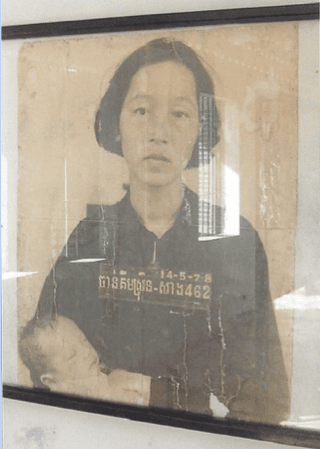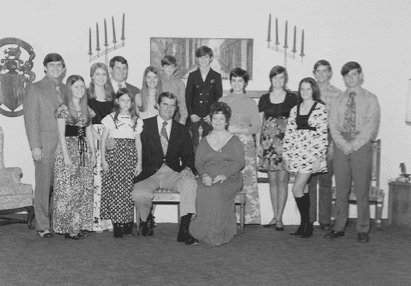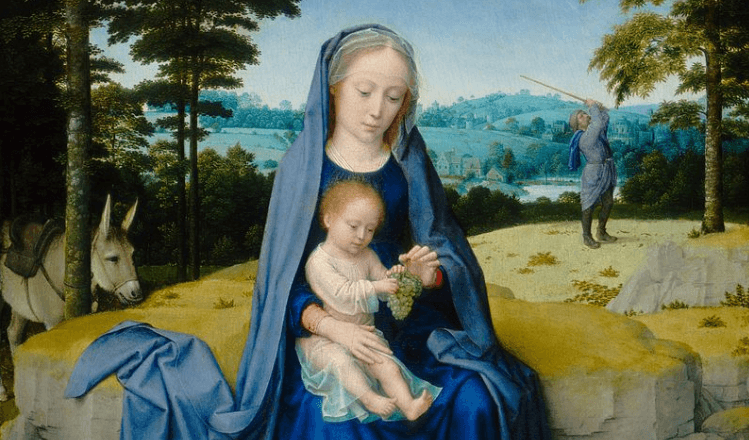An image of the Madonna and child.
During my teenage years growing up on the Mississippi Gulf Coast, my mother began collecting Madonna-and-child art: paintings, prints, figurines, carvings and statuettes.
At first the collection was a few items in the living room or kitchen. Gradually, the items began to establish a visual leitmotif of small, hallowed spaces throughout our entire house.
The collection ranged from primitivist molas in vivid reds, oranges and browns, to lithe, swirled Lladró ceramics in faint hues of blue and gray. After a point, it grew so large that word got around and she was asked to exhibit it at the local library.
When she began collecting her Madonnas, the reaction among my 12 siblings — and perhaps throughout our community — seemed to me a quizzical bemusement. To bear so many children and then create an homage to motherhood seemed to beg the question, “Haven’t you had enough maternity in your life?”
Mama passed away in 1998 from a stroke. Five years later, I had to travel to Cambodia for my work with the World Bank. With an afternoon of down time before the trip back home, I decided to wander through the dull concrete floors and barren yellow walls of the the Tuol Sleng genocide museum in Phnom Penh.
Prior to the Khmer Rouge’s reign of terror, the building had been a high school. From 1975 to 1979, as many as 20,000 Cambodians of all ages were arrested and taken there. They were photographed, stripped, chained to the floors and crammed into cells the size of closets. Then they were tortured with beatings, electrocution, waterboarding, rape, burning, knifing or suffocation. Killings were accomplished by drownings, beatings, bloodletting or, in some cases, surgery without anesthesia.
Only a handful are known to have survived.
By the time of my visit, Cambodia’s genocide had become part of its tourism trade.
Accordingly, the museum curators had enlarged photographs of the victims and mounted them as posters on the walls. The images were stark and monochrome: unblinking mugshots of the doomed.

Why could they have been brought to Tuol Sleng? In any other city in the world, they might have been found in a drab hospital waiting room, or waiting for a dreary bus — vital and endearing but unremarkable to the glance. Yet here they were arresting testimony as found art, an image that immediately brought my mother and her collection of Madonnas to mind.
The eyes were the first detail that caught my attention. When the picture was taken, she already had a strong premonition, I felt sure, about the most important facts that would define her existence. She could recall her sweet longing for motherhood. She could recall the aches, pains, fear and jubilation of childbirth. She could recall the moment when she took ownership of a mother’s resolve: the fierce determination to hold the world away from the tender, defenseless life in her arms.
I looked at her poise and self-possession and realized how utterly misleading they were. She must have spent wrenching hours and days infusing every possible iota of strength and hope and aspiration into her child. She must have tried to use every means, rational and irrational, to impart a future to her child as immense and vivid as her own imagination.
Inside the prison, she must have known they would be killed, and in dying they would be parted.
I looked at the sleeping infant. For the Madonna, her warm, bright-faced child must have had the perfect name, a proud name, a name intended for good fortune.
I imagined what had happened at the very moment the photograph was snapped. The Madonna, perhaps in defiance, looked straight into the camera. She was forlorn, but unbowed. Captive, fragile and vulnerable, she had nonetheless come to courage and dignity. I hoped for that.
When I returned home from Cambodia, I printed out the picture I had taken of the Madonna poster. Initially, I was disappointed. Glare covered the surface of the picture. The textures of her clothes were lost in pools of total blackness. In taking my photograph, I had not noticed the reflected image of the prison’s bars, which seem through a trick of the eye to appear both behind her and in front of her.
When I look at the photograph now, I reflect on the arc of my mother’s life and the magnitude of the emotional losses she must have felt, the kinship she must have felt with other mothers.

My intuition is that our generation perceives large families as constellations that have a binding emotional gravity. But that is a trope, and a shallow one at that. Children of large families grow up and go off to college, just like those in small families. They move to the other side of the planet. Their marriages or careers implode. They drift away or sometimes vanish altogether.
The more I think of my mother’s life, the more I appreciate the numberless shades of separation and longing she must have had to bear. Such memories have made me respect her emotional and psychological strength even more.
It does not make sense to anyone, I suppose, that a Cambodian genocide victim reminds some guy from Mississippi of his mother. But I keep the photograph without a frame, on the shelves next to pictures of my wife, my son and my daughter. Somehow, it feels as though a frame would confine in space and time something ennobling and immeasurable.
This way, when I hold the image, I can consider and honor, in every angle of light, what the Madonna of Tuol Sleng knew in her days of loving and loss, and what my mother knew for more years than I can fathom.
Joe O'Keefe is a former journalist and speechwriter who lives just outside Washington D.C.
